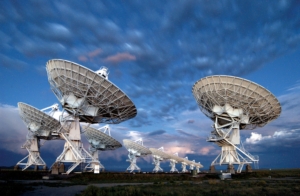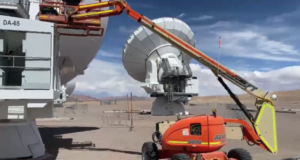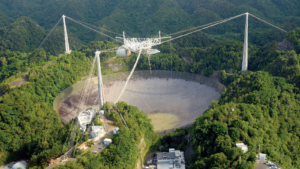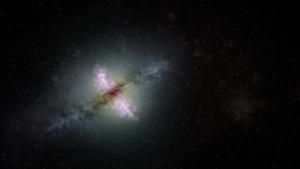Collaboration between the National Radio Astronomy Observatory, the Green Bank Observatory, and Raytheon Intelligence & Space turns the Green Bank Telescope and the Very Long Baseline Array into a radar system for studying the Solar System.
The Very Large Array: Astronomical Shapeshifter
When the Very Large Array was completed forty years ago, it was a different kind of radio telescope. Rather…
ALMA Takes First Step Toward Return to Service
The process of returning ALMA to operational status has begun by powering up the first few antennas for the first time since the COVID-19 shutdown in March of 2021.
NRAO and GBO Saddened at Loss of Arecibo Telescope
NRAO and GBO are saddened at the announcement of the decommissioning of the Arecibo Telescope in Puerto Rico, which has a long and distinguished history of scientific accomplishment.
VLA Sky Survey Reveals Newborn Jets in Distant Galaxies
Comparing data from VLA sky surveys made some two decades apart revealed that the black hole-powered “engines” at the cores of some distant galaxies have launched new, superfast jets of material during the interval between the surveys.
Featured Video: The Very Large Array at 40
Join our host Melissa Hoffman as she talks about the history of the VLA and some of the remarkable objects it has discovered!











